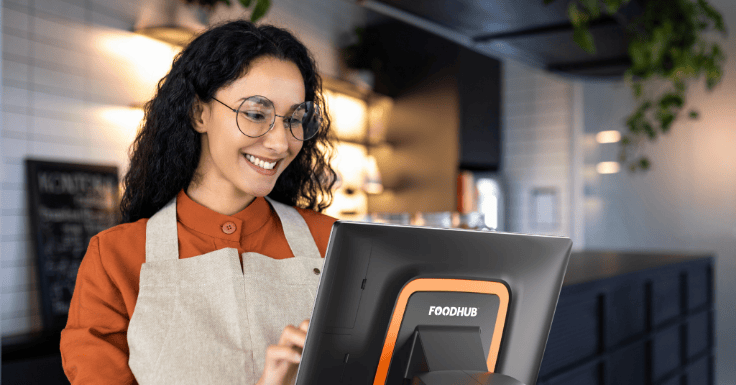Maximising Revenue in 2025: Cost-Saving Tips for Australian Restaurants


Running a restaurant in 2025 means navigating rising supplier prices, increased wages, and shifting consumer habits. Whether you’re managing a bustling CBD cafe in Sydney or a laid-back beach-front eatery in Queensland, one thing is certain: controlling your costs is non-negotiable.
But trimming expenses doesn’t mean cutting corners. It means being smart, proactive, and strategic—using the right tools and technologies to do more with less.
At Foodhub for Business, we help restaurants across the UK and beyond implement fair, sustainable pricing systems without hidden charges, ensuring that every dollar saved is a dollar earned.
Let’s start with the basics. Not all dishes are created equal. Some menu items may be fan favourites but eat into your profit margin. Others might be goldmines hiding in plain sight.
Identify low-margin, low-popularity dishes and consider removing or revising them.
Focus on bestsellers that deliver volume and margin.
Use a menu engineering matrix to plot high-margin vs. high-popularity items.
Feature profitable dishes more prominently on your menu layout.
Third-party ordering apps can be a necessary evil, but many take a large bite out of your profits. The smarter move? Use a platform with a fair pricing policy and no hidden fees or commissions.
That’s where Foodhub for Business stands apart. We offer tools that help you launch your online ordering and table service—without charging sky-high commissions.
Switching from high-fee platforms can save restaurants thousands annually, allowing you to reinvest in operations, staff, or marketing.

Restaurant cost control begins in the stockroom. Without proper tracking, it's easy to lose money through over-ordering, spoilage, or theft.
Use food inventory management software to track real-time usage
Set par levels and get automated alerts when it’s time to reorder
Adopt the FIFO (first-in, first-out) system for perishables
Review stock reports weekly to identify overused or underutilised items

Power and utilities are among the top five expenses for most restaurants. The good news? Smart energy strategies can generate long-term savings.
Switch to energy-efficient appliances (many states offer rebates).
Implement sensor-based lighting in storage and bathroom areas.
Regularly service refrigeration systems for peak performance.
Turn off unused equipment during slow hours or between shifts.
Even small changes—like installing LED lighting or updating your thermostat settings—can shave off significant dollars on your quarterly bills.
Wastage doesn’t only come from produce or power—it can come from poorly trained staff. Investing in cross-training and service protocols leads to fewer mistakes, higher table turnover, and better guest experiences.
Cross-train staff to handle multiple roles during slower periods.
Set daily shift goals and KPIs to boost accountability.
Gamify performance to keep teams engaged.
Share data on sales, complaints, and wastage to create ownership.
Gone are the days of printing 5,000 flyers and hoping for the best. With digital platforms like Foodhub for Business, you can run laser-targeted promotions and track every dollar spent.
Launch email or SMS promos to repeat customers.
Create time-sensitive offers during off-peak hours.
Retarget lapsed customers with special discounts.
Run A/B tests on offers to see what drives the most conversions.
Foodhub for Business helps you track user behaviour, understand order patterns, and refine your approach over time.
If you're relying on imported ingredients, you're paying more than you need to—especially in a market as agriculturally rich as Australia.
Build seasonal menus that reflect local availability.
Partner with nearby farms or growers.
Highlight "local hero" dishes to appeal to conscious consumers.
Reduce your carbon footprint and your supplier costs.
Customers love a local touch, and you’ll love the lower logistics bill.

The right POS system isn’t just a glorified till—it’s a command centre. A smart POS system tracks sales, employee hours, peak hours, and menu performance in real time.
Integrated table and online ordering.
Real-time inventory tracking.
Shift scheduling and labour cost analysis.
Loyalty program integration.
Foodhub for Business offers solutions built specifically for hospitality operators, giving you full control, minus unnecessary fees.
Takeaway and delivery have surged post-COVID, but so have packaging costs. Go green and save by streamlining how you package your meals.
Use minimal packaging wherever possible.
Switch to eco-friendly suppliers offering bulk discounts.
Encourage customers to bring their containers (and reward them).
Standardise portion sizes for packaging efficiency.
Rising costs might tempt you to raise prices, but customers are value-conscious. Instead, explore options like value meals, combo pricing, and dynamic pricing during peak/off-peak hours. Focus on perceived value rather than just price increases.
The best cost-saving ideas for restaurants in 2025 aren’t always dramatic—they’re consistent. By taking a hard look at operations, using data wisely, and choosing the right tech partners, restaurant owners in Australia can maximise revenue while staying competitive.
From commission-free ordering tools to powerful POS integrations and marketing support, Foodhub for Business gives restaurant and takeaway owners the power to:
Save more on operations.
Keep more of their profits.
Grow sustainably in a challenging market.
Partner with us today and unlock smarter tools for a more profitable tomorrow.